by Robert Lynch; March 12, 2024
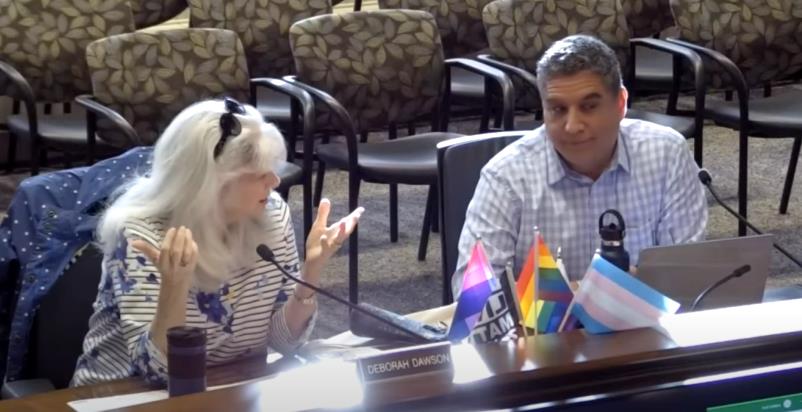
Back in January, the Tompkins County Legislature passed a policy that gave it legal clout to override City of Ithaca concerns and move quickly to demolish buildings on the site of its planned Center of Government. But while pre-emption may work with City Hall, it doesn’t work so well with New York State. Albany pulls rank. And that’s the problem County Government now faces.
“Do we still have the issue of the City in some way requiring us to have a more fleshed-out plan for a building before they’re happy with us tearing these down?” Lansing’s Deborah Dawson asked as the County Legislature’s Downtown Facilities Special Committee convened Tuesday morning, all expecting it to recommend deconstruction of the former Key Bank and Wiggins’ Law Office buildings that stand on the Center of Government site. And that it did.
But what also occurred was a discussion that many on the committee had not expected. A state agency, rather than the City of Ithaca, has emerged as the primary obstacle to a quick tear-down. And it’s all because the two doomed buildings, though relatively new, stand in the DeWitt Park Historic District.
“While these buildings aren’t ‘contributing structures’ in the Historic District, we are in the Historic District, so there are certain rules and regulations that we need to follow as we remove these buildings,” County Administrator Lisa Holmes Tuesday advised the committee. “So we just want to make sure that we leave ourselves enough time to gather that input and make sure we’re proceeding correctly.”
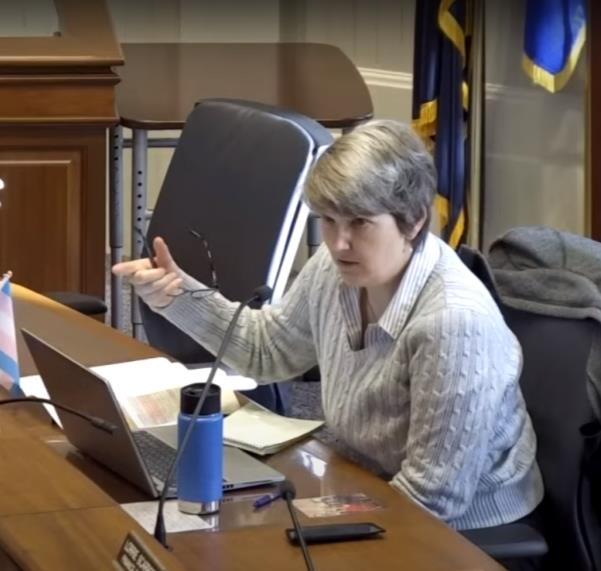
What Holmes knew—but what many legislators did not—was that within the past month the preservation group Historic Ithaca convened a meeting with representatives of the New York State Historic Preservation Office (SHPO; nicknamed “Shippo”), an arm of the State Department of Parks and Recreation. County Planning Department officials attended the discussion. And at that meeting, we were told, SHPO’s Regional Director politely laid down the law. SHPO said that should Tompkins County proceed precipitously with deconstruction, even of these two seemingly non-historic structures, Albany regulators could bring Tompkins County lots of grief.
“They (SHPO) explained to us that they have a role in any kind of funding requests that might go through Congressional earmarks or other types of funding,” Katie Borgella, Tompkins County’s Director of Planning and Sustainability, told the committee. “Any kind of federal or state permit requirements they need to sign off on,” Borgella continued. “And they explained that if the buildings were taken down before we understood the nature of those requirements, they wouldn’t be able to commit, which would result in not getting any funding or permitting.”
The Center of Government will cost $40 Million or more. But it would be built mostly, if not exclusively, with local money, not state or federal aid. So legislators pressed Borgella as to what true leverage Albany regulators hold.

Borgella said there’d need to be stormwater runoff permits issued for the new building. And if the County proceeds with plans to build a geothermal system to heat and cool the structure, state agency assistance could help build it. “Apparently all of these agencies have a form that SHPO has to sign off on, and if they don’t sign off on it, it can mean that the funding or the approvals don’t happen,” the Planning Director explained.
Critics of the Center of Government and of the heavy-handed tactics the County Legislature has used of late might say Tompkins County is getting a taste of its own medicine.
At its meeting January 16th, the Legislature adopted the so-called “Monroe Balancing Test” in an attempt to provide it pre-emptive power over the City of Ithaca in pressing forward with deconstruction.
Named after an obscure 1988 New York Court of Appeals decision, the Monroe Balancing Test would, if upheld in this instance, override an Ithaca City requirement that before buildings in an historic district come down, the City’s Landmarks Preservation Commission must review design plans for what would replace them. Designs for a Center of Government are months, if not a year away. Tompkins County hasn’t even chosen an architect.
Regulatory concerns aside, the Downtown Facilities Committee Tuesday unanimously recommended the removal of both the former Key Bank and Wiggins Office buildings. And by a vote of five-to-three, committee members accelerated the deconstruction timetable. They added language calling for building removal “commencing now with all deliberate speed to be completed by February 2025.”
Both of Enfield’s legislators, Randy Brown and Anne Koreman, voted for deconstruction, but declined to support the speedier timetable.
At previous meetings, the Downtown Facilities Committee had discussed moving deconstruction at a slower pace, one that could have left both buildings standing until almost a year from now.
“We can spend money trying to keep these buildings safe and going and nothing more than a blackboard for graffiti for the next year or so, or we can proceed the way we planned to,” legislator Mike Lane, a long-supporter of speedy demolition, told the meeting. “We need to get these down.”
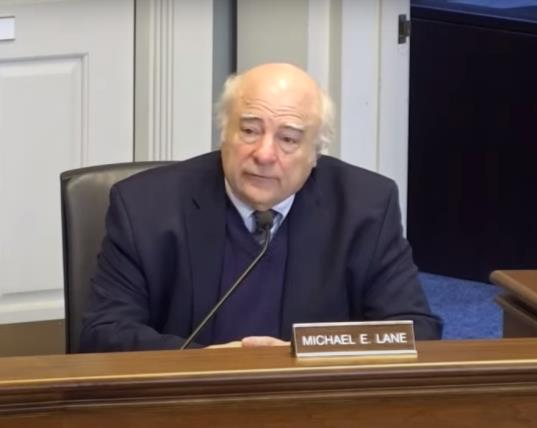
Baffling to some, including to those on the committee, is the rationale underlying SHPO’s purported hesitancy. Both the bank building and the law office were built in the 1960’s, not the 1800’s. True, they stand within the same block as does DeWitt Park. Yet they’re hardly “historic” as most people see them.
“Although the buildings are not considered contributing to the local Historic District, that district is defined with a period of time of significance, and that doesn’t mean that the buildings can’t be significant in a different way,” Planning Department staffer Megan McDonald, one of those who attended the meeting with SHPO’s Director, explained. “And that’s what the State Historic Preservation Office is getting at.”
Some in Ithaca’s preservationist community felt snubbed by Tompkins County’s recent pre-emptive actions. And the ongoing, underlying tension led legislator Greg Mezey to question Historic Ithaca’s possible ulterior motives in convening the recent session with SHPO.
“Is Historic Ithaca trying to assist us in the process of these, like be a true partner, or be more of a roadblock in the process?” Mezey asked.
Borgella hedged, but leaned toward collegiality.
“I honestly felt like more of a true partner, to me,” the planner answered Mezey. “But they’re concerned that we don’t fully understand the ramifications of this in terms of funding and permitting.”
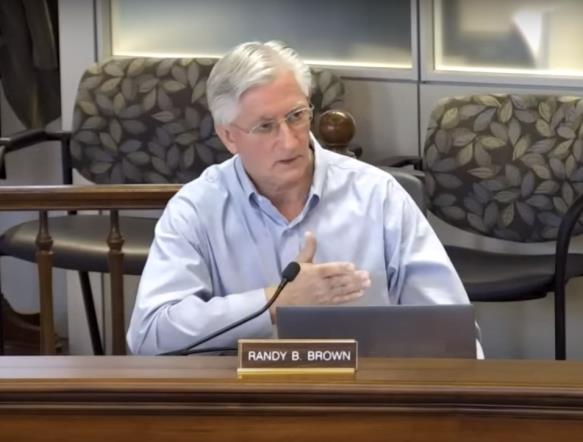
“Katie, if we’ve already taken down the two buildings, do you think SHPO will retaliate against us?” Mike Lane asked, questioning SHPO’s power should Tompkins County simply plow ahead.
“What they said is if we take down the buildings and we don’t need permits or money to do it, but then we do need permits or money to build the new building, that would be considered ‘segmentation,’ and they then wouldn’t be able to sign off on the new building funding or permits,” Borgella replied.
“Sounds like segmentation to me means retaliation,” Lane quipped.
“I really think we need to have some full and frank conversations with New York State to find out what’s their intent here,” Ithaca legislator Rich John told the committee. “These buildings are ready to go,” he said of the two targeted for deconstruction. “There is no great historic value here. I believe in historic preservation. This isn’t it. This is just delay.”
“There’s a long history of these state agencies doing nothing for very long periods of time,” John warned. “And if we’re looking out for the taxpayers here, every year of delay costs a lot of money.”
Delay was not only on Rich John’s mind Tuesday. It was on Deborah Dawson’s mind as well, and not just because of SHPO’s new-found reservations. Dawson said she found it hard to believe when County Facilities Director Arel LeMaro presented a time line that stated the soonest a 55,000-square foot Center of Government might be finished would be four years from now.
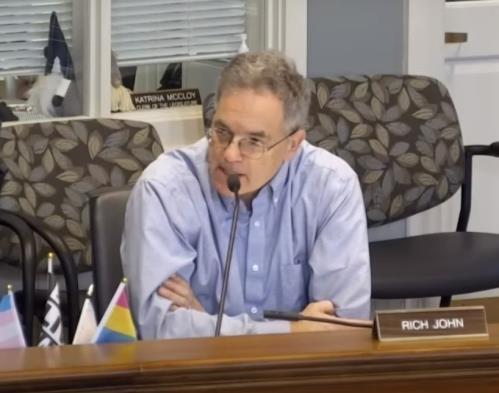
“Why does this whole process take so long?’ Dawson asked LeMaro. “I’ve never obviously been involved building anything,” she conceded. “But 2028?”
“We’re not building a pole barn. We’re building a four- or five-story building,” Lane commented.
“We can expedite,” the Facilities Director assured Dawson. But he noted that legislators have demanded “community input,” and that negotiating with various departments about the space they’d occupy also takes time.
And now, apparently, those community conversations will expand to include Historic Ithaca and New York State.
In fact, Albany’s regulators may not even allow deconstruction staff to take interior contents out of the two, hardly-historic structures until they can first investigate and “document its historic nature.” Truly, SHPO’s bureaucrats don’t see those buildings the way most locals do. What kind of an heirloom is a 1970’s-era teller’s station?
“I don’t think we can make a blanket assumption that the interior wouldn’t be considered important,” Borgella cautioned.
“We should have known about this a while ago,” Rich John told the committee. “This is pretty relevant. And having seen New York State sit on their hands on projects for years, we could be completely thrown off by this.”
Yes, Deborah Dawson could be looking beyond 2028.
“I struggle with having an outside entity in those buildings telling us what to do with the stuff,” committee chair Randy Brown said. “I don’t see how another government entity can tell us we can’t do something inside our own buildings. I struggle with that.”
###

